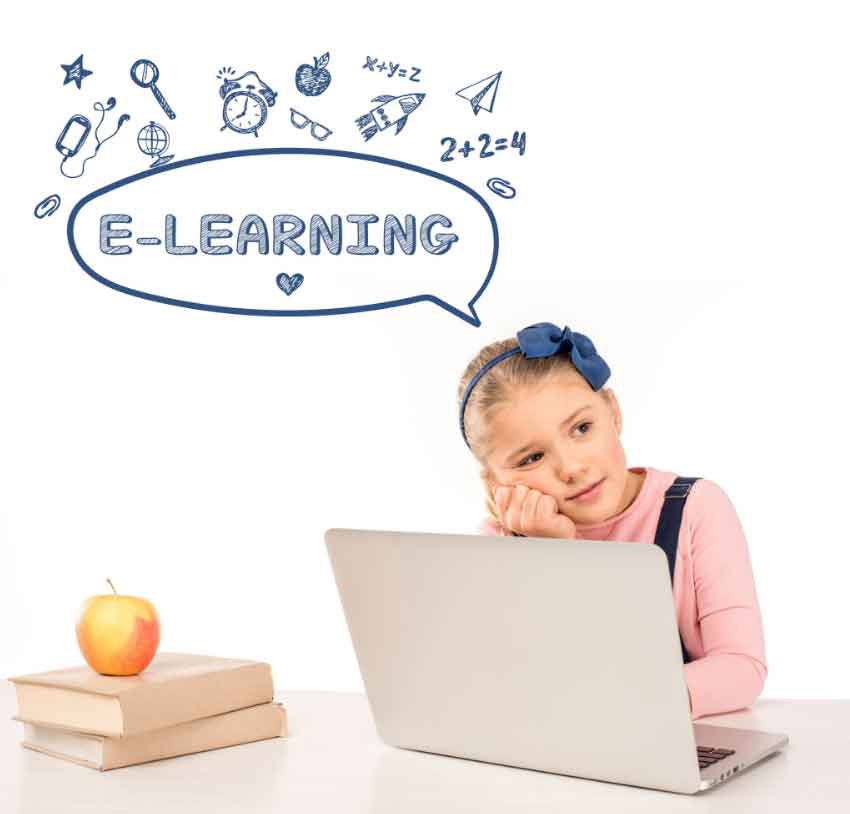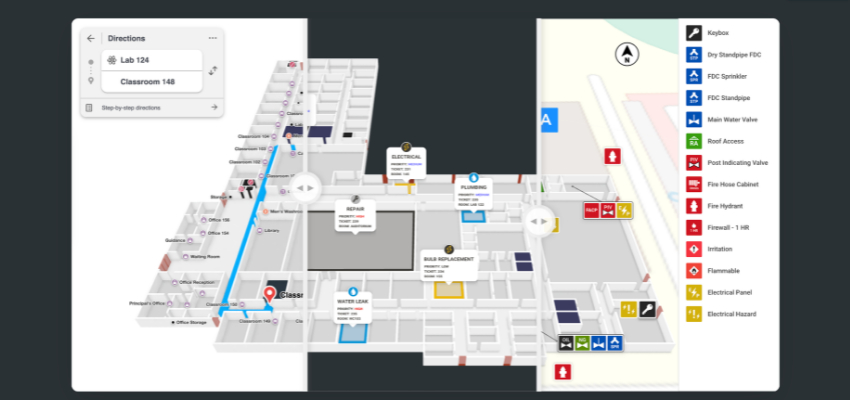Show:
A Comprehensive Guide to Understanding eLearning Platforms
Whether we are talking about social uprisings in Germany or the States led by anti-maskers or the worldwide travel ban that brought down thousands of airplanes, the COVID-19 pandemic really shook the world we live in. High unemployment rates and the rise of home delivery food options have made the news so far but another key issue is the fact that students have been out of school for months now. As fall approaches, schools and universities are having to come up with various ways to enable students to attend classes in an epidemiologically safe manner. For this reason, many schools are turning to eLearning platforms, as a possible solution, whether interim or permanent.

From first-graders to seniors at college, more and more people are logging in eLearning platforms and taking classes online; something they have never done before. The challenge is even greater for seasoned teachers and instructors who preferred tête-à-tête during the decades they worked in education.
The eLearning hype is not restricted to educational institutionally exclusively. After the introduction of #stay_at_home orders by national and local governments, many businesses turned to work from home only. This switch includes training sessions as well since they are now carried out online using eLearning platforms.
So, what exactly are eLearning platforms?
These tectonic shifts in the way we lead our lives direct us at answering a seemingly simple question:
What exactly are eLearning platforms?
In a nutshell, it’s an online portal/platform containing educational content.

An alternative definition includes the addition of live instruction regarding a particular topic. Some learning platforms allow access free of charge (such as amateur YouTube channels), while others ask you to pay a membership to be able to attend lectures.
The 2020 coronavirus pandemic might have given rise to the popularity of eLearning platforms but this is not the main reason why schools and businesses alike are using them to replace traditional learning formats in the long run.
Advantages of eLearning platforms over traditional learning formats
Most obviously, you needn’t leave your house to attend a class online. Of course, there are disadvantages to working from home but you still get to save gas money, if nothing else. Furthermore, the atmosphere is more relaxed, so you can time the learning process to your preferences.
For children willing to learn, this means that they will no longer get distracted by their less attentive peers. The teacher can simply lock them out of the conversation or they can leave the video call on their own. In fact, using eLearning platforms is associated with various issues that can be attributed to different types of eLearning platforms.
Additionally, eLearning platforms offer various tools for collaboration and communication. Every experienced e-learning designer can tell you that, with the right set of tools, you can foster greater engagement, increase student participation, and facilitate knowledge acquisition. For instance, the most common tools are virtual whiteboards, where students and instructors can work together in real time. Such tools enable attendees to ask questions without fear of being judged by their peers or instructors, thus paving the way for a more engaging learning experience. Another major advantage of eLearning platforms is that you have access to a vast amount of resources and learning materials online. The educators working at https://ntponlinelearning.co.uk can explain how easy it is for students to access materials such as videos, presentations, and other forms of interactive content through eLearning platforms. This makes the learning process more interesting and engaging, which can lead to better retention of knowledge.
Two main types of eLearning platforms:
1. Asynchronous online and offline courses
The most common type of eLearning platform that predates the Internet itself are asynchronous courses. These courses can be both online and offline (in which case you download or burn materials) but the former method is more popular nowadays because of ever-increasing Internet access speeds.
These courses are not held in real-time, as students acquire content beforehand and they are given an exact timeframe for completing individual courses, as well as the entire course. Communication between lecturers and students mostly takes place through discussion boards and e-mail correspondence.
Advanced courses even have business communication platforms, such as Slack, to facilitate better and faster correspondence. Essentially, asynchronous online learning environments are ideal for students who have a busy schedule that prevents them from attending scheduled online classes.
2. Synchronous online courses
Although their popularity was on the rise in the 21st century, online instruction courses really took off thanks to the COVID-19 pandemic. A lot more people were literally forced to learn from home, so teachers and instructors saw a sharp increase in the total number of lessons.
Online courses are fairly simple to understand, as they involve a lecturer teaching simultaneously all or some of the students. In some instances, students can ask for 1-on-1 classes. Classes are held via widely available video chat and messaging apps such as Skype or Zoom, although some companies and institutions have decided to build their own eLearning platforms.
Synchronous online courses aren’t used exclusively for learning, as the tech behind them allows for webinars and even fairs to take place in real-time, with thousands of participants tuning in to watch. The biggest advantage of this type of course is the ability to participate in a curriculum-based course that is not much different from ex-cathedra lectures, typical of the university environment.
Constructive parents’ involvement
Offline schools have one big drawback and that’s parents’ negative involvement in their children’s schooling. However, eLearning platforms not only limit the parents’ role but they clearly define it.

The fact that the teacher is “virtual,” allows parents to send their suggestions and complaints through a messaging app. If there is a need for face-to-face communication, parents can always schedule a video call.
Your child’s reports are sent using the same com channel, as you can even edit them or write your opinion in the form of a comment. Finally, eLearning platforms allow parents to stay up to date regarding their children’s homework and check it online. In addition, they can edit it and make suggestions before the teacher is granted permission access to the file.
A personalized experience
The reason why parents’ role is reduced to a mere supervisor and not a co-.teacher, as in offline education, is the personalized experience eLearning platforms offer. This is especially true for asynchronous courses where children are left to move at their own pace.
From understanding content stored 24/7 at an eLearning platform to loosely following directions from the instructors, children are left to cover ground when and how they see fit. Such a high level of independence is typical of adults, so companies use such platforms for educational purposes in the era of working from home.
It could be argued that eLearning platforms allow for exploration on side of the learners. This is ideal for creative industries, where business owners depend on the savviness of their employees to create extra value that would separate them from the competition.
Due to the global lockdown, entrepreneurs were worried about the levels of ingenuity going down but the aforementioned independence in the realm of eLearning platforms makes it possible for workers to stay sharp-minded and creative.
Future prospects for eLearning platforms
The future of the online learning boom in a postcoronavirus world is a question on the minds of many. Although major shifts are possible and even expected, one thing is certain: eLearning platforms are here to stay.

One reason why the eLearning industry is likely to increase are Internet connection speeds worldwide. More and more people can now make video calls, so instructors won’t run pout of students any time soon. Furthermore, mobile devices can now facilitate eLearning apps, making it possible to learn on the go.
In the future, eLearning platforms are likely to experience gamification, i.e. the introduction of playful methods to engage users and enhance the learning process. As stated above, the learning experience is going to get increasingly personalized, with teaching materials custom-tailored to match the preferences of each student.

 Return to Previous Page
Return to Previous Page








